What's Content Pruning? Here's How It Can Help (And Hurt)

A term you might have seen crop up recently in the realm of content marketing is "content pruning." It's become something of a trend, with quite a few articles published about it in the last few months.
What is it, though? How can it help, and how might it hurt? How can you do it yourself if you decide to prune your old content?
Luckily, I'm here to dig into the topic for you.
 30 Second Summary
30 Second Summary
You can improve your website's quality by removing content that doesn't help your site. Content pruning means you'll cut posts that are outdated, get no traffic or have poor quality. Before you delete anything, you have to check if posts have valuable backlinks, decent rankings or convert visitors. If you find content worth saving, you can update it instead. You should redirect deleted URLs and fix any internal links. To stay on top of this, you should review your content every 6-12 months.
What is Content Pruning?
Content pruning is, essentially, a buzzword for the process of performing a content audit and removing content that isn't doing anything for your site.
Think of it like pruning a fruit tree. For those of you who aren't arborists, fruit trees need a lot of maintenance to provide rich, delicious fruit. If you just let them go, they produce a ton of small, under-ripe fruit because the energy of the tree is spread out amongst all of the fruits, so none of them get the sunlight and resources they need to turn into delicious apples/peaches/pears/what have you.

So, people who tend orchards spend a lot of time pruning trees. They cut off all but a few core branches and may even prune the tree to keep it short enough that they don't need ladders to reach all of the fruit. Removing the branches forces the tree to invest more heavily in a smaller amount of fruit, resulting in larger, more delicious fruits.
The same goes for your website. If you maintain a weekly content schedule, publishing two blog posts per week, that's 104 pages of new content per year being added to your site. If you apply the 80-20 rule (the Pareto Principle), you know that maybe 20 of those blog posts give you the traffic, links, and results you want. The rest? Well, they're the under-ripe fruit.
The idea behind content pruning is that some of your existing content might be sub-par. There are many different reasons a piece of content could be sub-par:
- It has a lower word count than is required for good content.
- It isn't as deep or as nuanced a coverage of a topic.
- It has a lower quality standard than the rest of your content.
- It's old and out of date.
- It was never edited and contains grammar issues, typos, or fluffy paragraphs.
You're probably familiar enough with your site that you can think of a few examples right off the bat. Mostly it's going to be older content, but sometimes newer, low-effort content can fall below the bar as well.

In SEO terms, good content pulls you upwards, and low-quality content holds you back. Mediocre content doesn't have a pull one way or the other but may provide an opportunity to improve it such that it pulls you upwards instead. The goal of content pruning, though, is to cut off the harmful content that holds you back, so your site rises with no further effort.
Content pruning is all about identifying and removing the content holding your site back. In a way, you can think of it as addressing Google penalties. If you have a penalty being taken against your site for, say, bad backlinks, you can disavow those backlinks and get a higher ranking with no other actions taken. All you're doing is removing the weights holding you down.
Lastly, there's some evidence that Google "averages" content quality. This theory suggests that if you have ten great pages and ten poor pages, search engines may internally rate your content quality as "okay" among those twenty articles. Trim those ten dead branches, and suddenly your average content quality increases to "great." You only have ten articles left, and all of them are great.
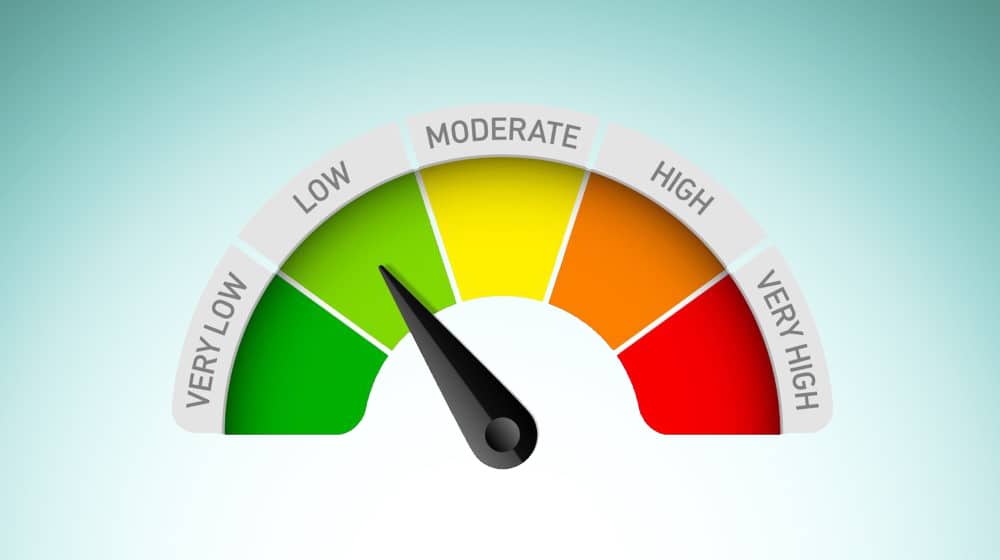
As John Mueller of Google said:
"If we see that there are significant parts [of the website] that are lower quality, then we might think overall [that] this website is not as fantastic as we thought... It's a matter of us trying to understand the quality of the website overall."
Pruning improves how search algorithms view your site, improves the overall quality of your content, keeps you focused on your best-performing pages.
What Content Pruning Is Not
Content pruning isn't a complete site or blog audit. It cares about backlinks since removing a piece of content with valuable backlinks means you lose the value from those links, but it doesn't perform a full backlink audit and disavow process.
Content pruning is also not a complete content optimization process. While you might use the process to identify content that you could improve, the key for pruning is the pruning part: removing the worst content on your site.
Is Content Pruning Risky or Harmful?
Any time you remove content from your site, you have to wonder: what if this hurts the site instead of helping? It takes skill and knowledge to identify the branches you shouldn't remove. Indeed, you can ask the same about pruning trees; if you cut the wrong limb, it can damage the tree's overall health.
Content pruning can be harmful to your website in three ways.
1. First of all, if you remove too much content, it dramatically decreases the size of your site. Google might then think your site is too small to be worth the ranking it has. After all, most of the best sites have hundreds or thousands of high-quality pages. This situation is especially relevant when your site is relatively new; each post represents a higher percentage of your overall content and thus has more value proportionally compared to everything else.
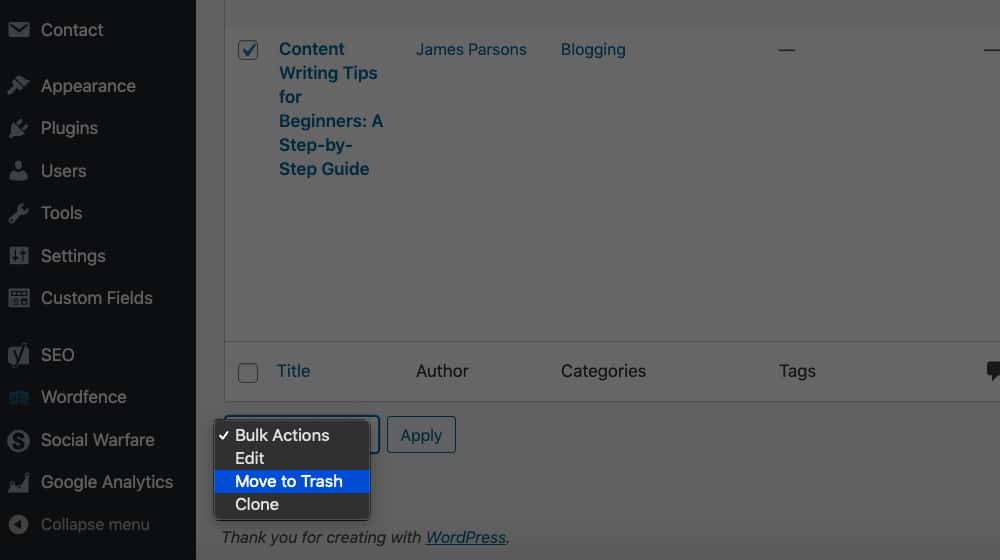
2. Secondly, even content that you think is bad might have a little bit of value for your site. Sometimes the bar for ranking in search engines is surprisingly low, and even a mediocre piece of content is still ranking for the keywords it targets. If you don't dig into the analytics and see what's happening, you can accidentally cut a live branch and hurt your site overall. You can protect yourself against this, to some extent, by iteratively pruning and restoring anything that makes your site decrease when it's removed.
3. Third, it can come down to backlinks. Backlinks make the SEO world go-'round, and links are valuable even if they don't refer any traffic to your website. They have to be good links, but an excellent link to a piece of content from two years ago (that gets no traffic) can still be beneficial from an SEO standpoint. Removing that content breaks the link and loses you that value.
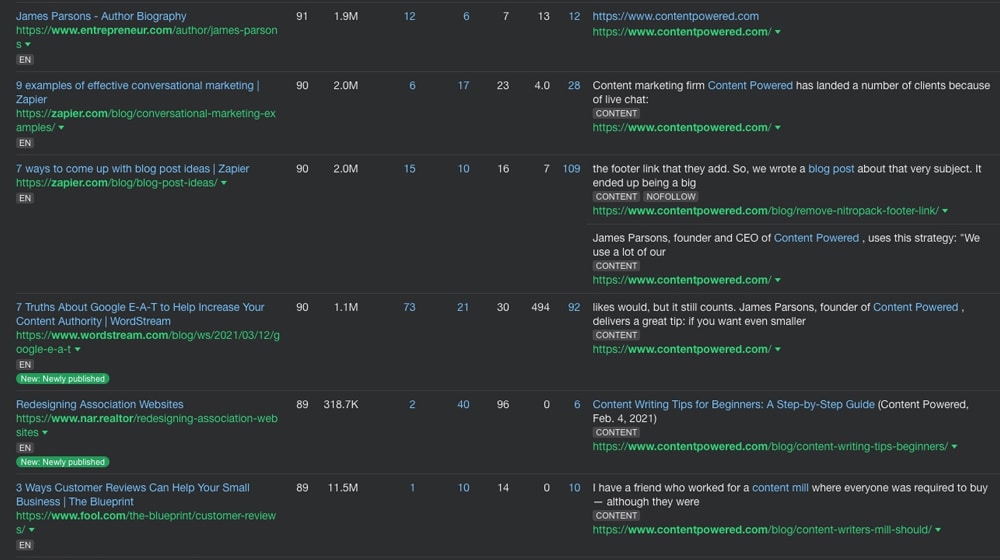
In other words, removing high-quality content can harm your site, but removing outdated content can help your site. So, how do you determine what low-performing content to remove?
How Do You Pick What to Prune?
The easiest part of pruning content is picking the content most likely to be pruned. Essentially, the content pruning process is a three-step process.
- Identify content that might be worth pruning.
- Please verify that the content has nothing that would make it worth saving.
- Monitor site analytics after pruning to make sure they don't decrease.
So, how do you go about step one?
Generally, you start by just going over your content and picking content that meets any of these qualities:
- Old pages and the information in them is out of date. Especially if the out-of-date information is wrong enough, it could be harmful to readers who follow the data.
- Pages that do not rank for their keywords do not get traffic and are unlikely to change these facts without serious investment. Pay special attention to pages that aren't even indexed.
- Pages that are close enough to others may cause keyword cannibalization (or worse - duplicate content issues or penalties).
I find it helpful to use a tool like Screaming Frog to scrape a list of all content on the site, along with valuable information about them. For each, you can use the resulting spreadsheet to keep tabs on your content and enter any additional information, such as ranking, keywords, and backlinks.

Any content that has a redeeming quality can be removed from the underperforming content list. Redeeming qualities include:
- The page is ranked for valuable keywords. Even a ranking of #10 puts you on the front page and means you're in a good position to improve the content rather than remove it.
- The page gets a small amount of organic traffic. Traffic is hard to come by, so you can keep any content that has received traffic since you last performed a content audit. You may want to consider deleting posts that only pull in a few visitors per month (or less), but that's up to you. It's important to focus primarily on traffic that Google is referring, and not necessarily direct visitors or social visitors. You can find this information in Google Search Console. Pageviews from other channels can still be considered if they're delivering enough visitors to make a difference.
- The page has backlinks. Now, this one is tricky because there are plenty of cases where your backlinks can be low-quality or spam, and those shouldn't make you keep around a low-quality page. So, you'll need to do a link audit to qualify your backlinks and ensure they're worthwhile. This step takes a decent amount of time since you can't automate much of this process - you'll want to carefully verify the links for each URL to make sure none of them have any strong backlinks. You don't want to cut corners on this step. I like to use Ahrefs to download a complete list of links for each page that I'm auditing since it has one of the most impressive and complete backlink databases. It's paid software that starts at $99 per month. If you value your website's performance and you don't want to accidentally undo your hard work, I highly recommend it.
- The page has conversions. If you're tracking goals and sales, you can immediately exclude any blog posts that are converting into sales. You can find this information in Google Analytics or whichever suite that you use for conversion tracking.
This process leaves you with a list of content that seemingly has no redeeming qualities. So, you have one more filter to do before starting pruning.
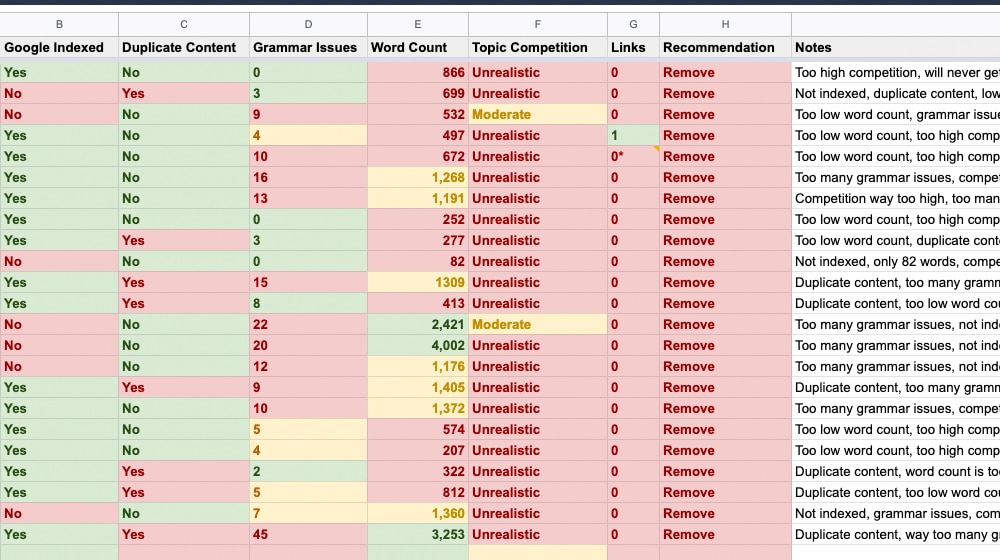
Does the content have potential?
Consider this. Could you buff up the content by updating the information, doubling the word count, merging it with similar content, tweaking the target keywords, and making the content fill a role in your overall blog? Would some investment make the content worthwhile? And, importantly, would doing so be worth the effort?
Check the bounce rate and time on site statistics. Are people leaving shortly after landing on your article? Are those visitors leaving at a higher rate than your other articles? You can use this data to uncover issues and find areas for improvement to help that content perform better.
It's important here to also look at the historical performance of that post. Even if it received zero visitors in the past month, it might have received a ton of traffic years ago. You don't want to be quick about scrapping these types of posts. You may be able to repurpose them, or if it can be considered thin content and your competition has increased, you can consider consolidating it with a similar article into a larger guide.
On the other hand, if there's nothing redeemable about your content, mark it for deletion.
How Do You Prune Content Successfully?
Once you've determined what content you want to prune, it's time to do it. I recommend a detailed process to ensure that you're making the right move.
1. First, benchmark your current search rankings and traffic numbers. This step will give you a report you can use to compare your site to later to see if your content pruning had a beneficial effect. Of course, there are many confounding variables, like the ongoing content marketing efforts you're performing or an outreach campaign, but it's still a good idea to at least make sure you don't drop below where you started.
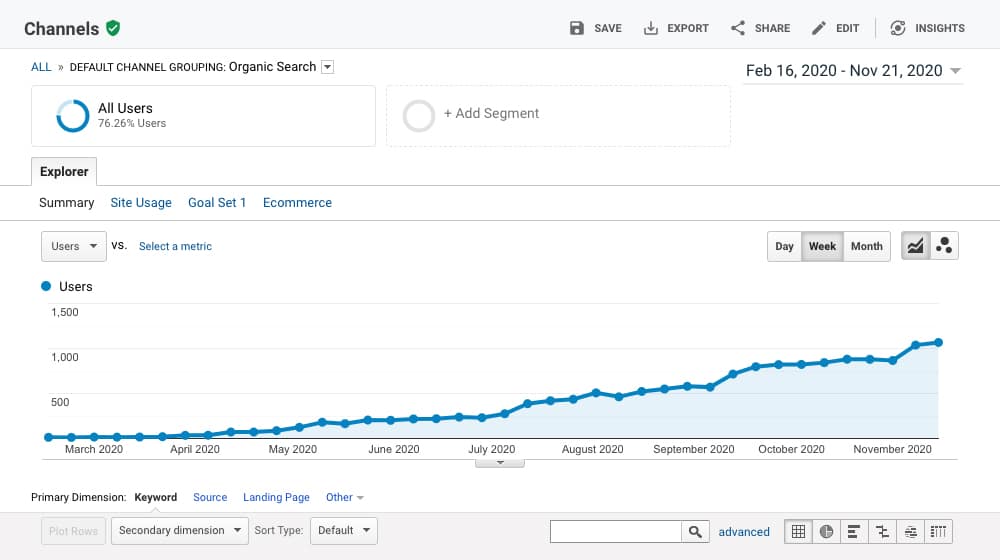
2. Second, unpublish the content. In WordPress, for example, you can go to edit the post and find the box in the sidebar that says "Post status: Published" and change it to Draft. Drafts are visible to you in your dashboard but are not visible to your audience. The URL is still saved if you republish the post later.
The goal of this step is for insurance purposes. If removing the post does hurt your SEO somehow, you have it right where it was and can republish it immediately. It's a hell of a lot easier than trying to copy and paste the post into and out of a Word document or trying to scrape it from the Wayback Machine to restore it later.
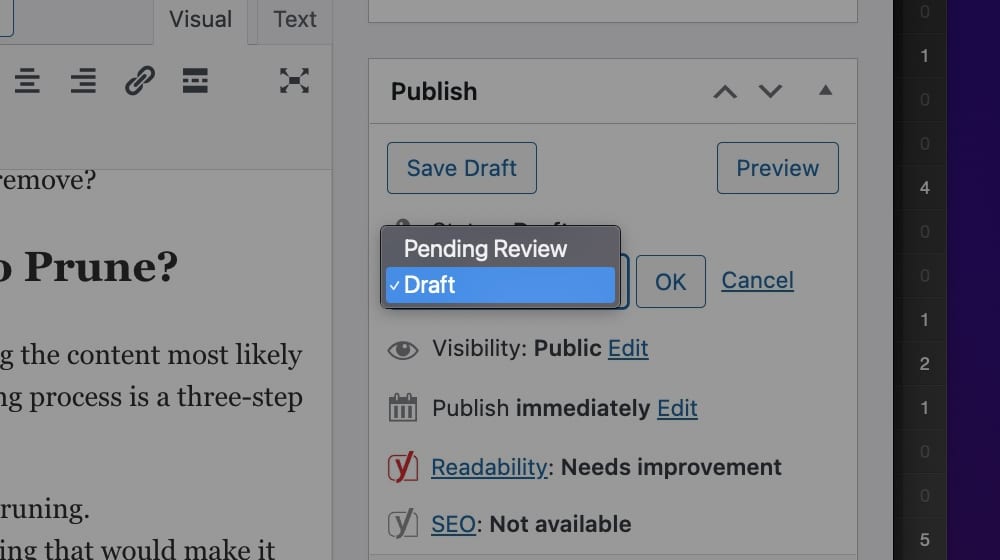
3. Third, implement a redirect. Generally, when you remove a piece of content from your site, even if it doesn't have any links or traffic that you can detect, it's still good practice to redirect it. You never know if it was shared on social media or linked to a website that isn't indexed in the backlink monitoring sites. It's always possible that you missed a link or that it was getting traffic from users who block scripts and thus aren't tracked, for example.
I wrote a breakdown a while back about how to delete content properly and talk about the various kinds of HTTP status codes and redirects you can implement. Generally, though, you want to implement a 301 redirect and point the old URL to the next most relevant blog post elsewhere on your site.
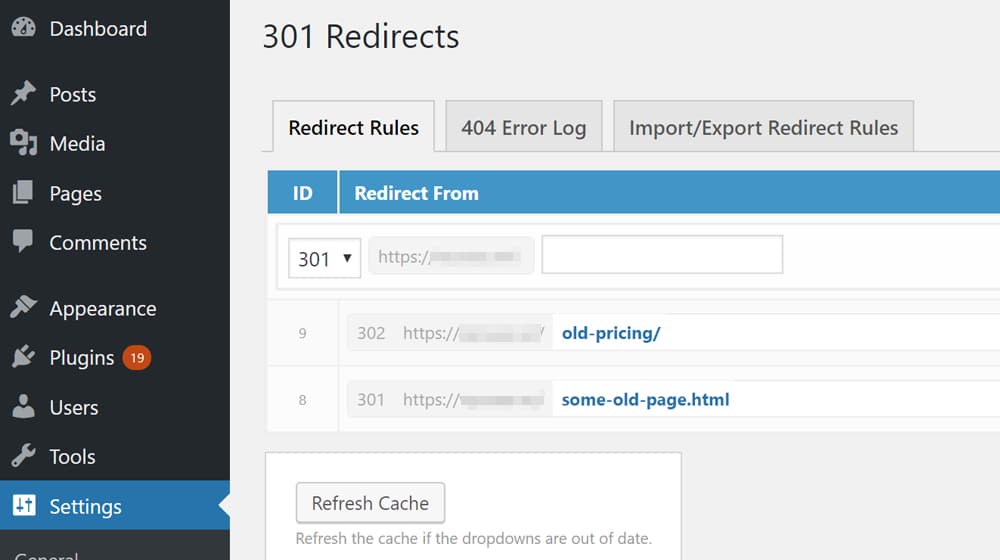
4. Fourth, clean up other posts on your site. Internal links are essential for SEO, user dwell time, and other metrics. As such, you might have a host of internal links now pointing to pages that don't exist. The redirect will catch anyone who clicks on the, but it's better to go through and change them manually instead. Think of the redirect as a backup in case you missed one. Luckily, WordPress has easy-to-use link management tools, so this should be trivial to manage.
This pruning process might change depending on the situation, and there are other considerations after deleting your old content. For example, if you've internally linked to those deleted blog posts in the past, you'll want to scan your existing content for broken links so that you can find and remove those.
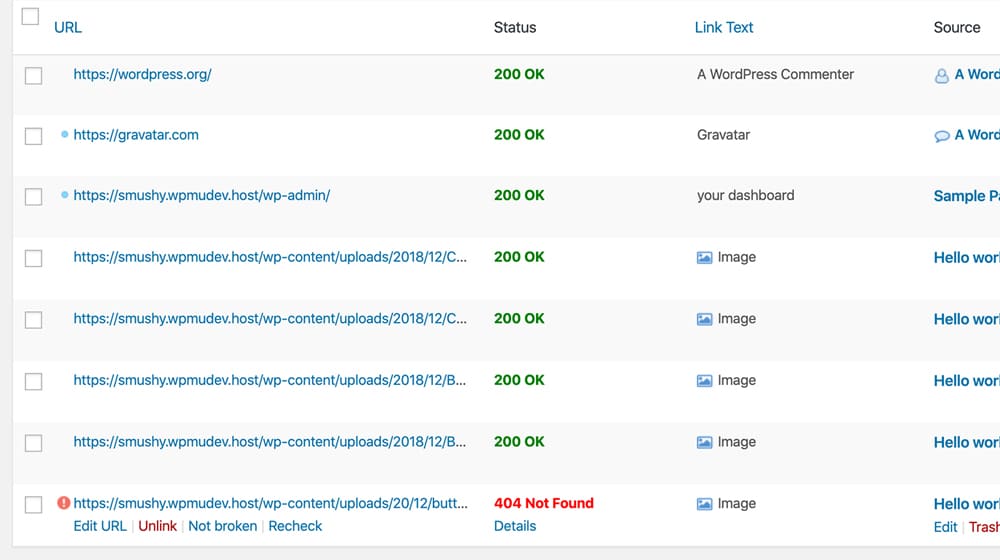
If you are trying to recover from a penalty and discover stolen, spammy, or downright awful content, you might want to add the noindex tag to those pages instead of redirecting them.
How Often Should You Prune Content?
Theories vary on this. I say that once-a-year audits are sufficient for most small and many mid-sized sites. If you're only publishing content once or twice a week, and you're a relatively young site, things aren't going to change that much from month to month.
I've seen some people say that once every six months is suitable for a review, especially for any website with under 1,000 blog posts or pieces of content. That's fine too. It comes down to how much of a difference you think it will make in your content strategy. Pruning out low-quality content that isn't actively harming you isn't going to do a whole lot, and it may have the opposite effect. Pruning out content that Google refuses to index, is thin or fluffy, or barely addresses the topic's core will help you.
This process is essential housekeeping for your digital marketing efforts. Some blogs never audit their content, and their old content is filled with cobwebs. Dusting off those cobwebs makes your site a better place. It's not fun, and it gets more difficult as your site gets more prominent, but it's something that you shouldn't skip or take lightly - especially for websites with old content.
Have you embarked on a quest to prune content? Do you have any questions about it? Let me know in the comments below!



 30 Second Summary
30 Second Summary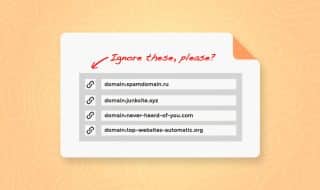



March 08, 2022
Interesting strategy! I have several old articles I've left alone but I think it's time to reassess if they're still worth saving.
March 09, 2022
Hey Eric!
It's so valuable to do this at least once a year.
I think it's a good idea to sort content into three buckets; merge, improve, and delete/redirect.
I merge posts sometimes; like this post, which was the result of combining three similar blog posts:
https://www.contentpowered.com/blog/blog-benefits-helps-seo/
If a post used to have traffic 3-5 years ago but dropped off sharply, it's a good candidate for a rewrite. It may just be that competition grew substantially, and competitors wrote better articles that eclipsed yours. Rewriting it and putting more effort into that topic will help you regain rankings. I wouldn't "prune" content like this that performed well in the past (unless it was on something outdated, like an article about the iPhone 6).
If it never performed, had any links or traffic, and is generally a dud, it may be best to delete it and redirect it to a similar page. You'll want to delete it if the post hasn't been indexed after a year or two - if search engines aren't a fan of it, it's probably a good sign that it's not worth keeping.
September 15, 2022
Looks like it's time for me to do some pruning! Great read!
October 07, 2022
Good luck, and thanks! 😀